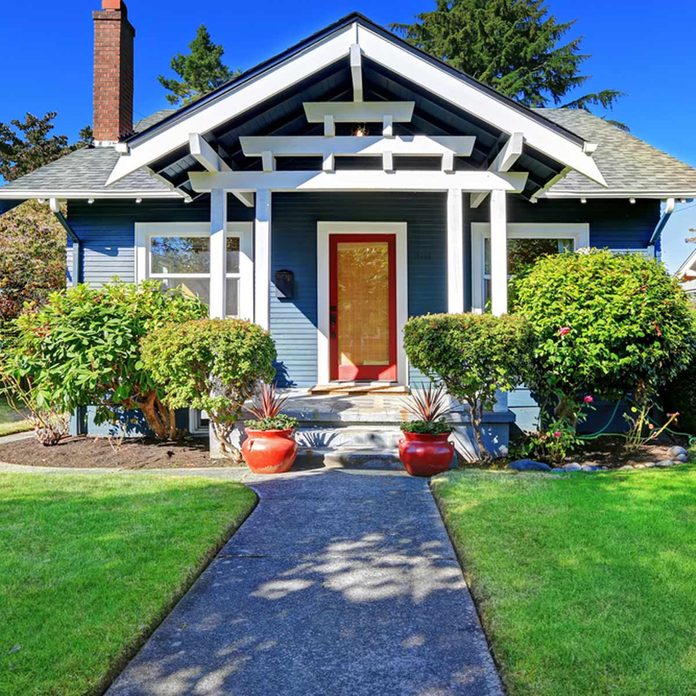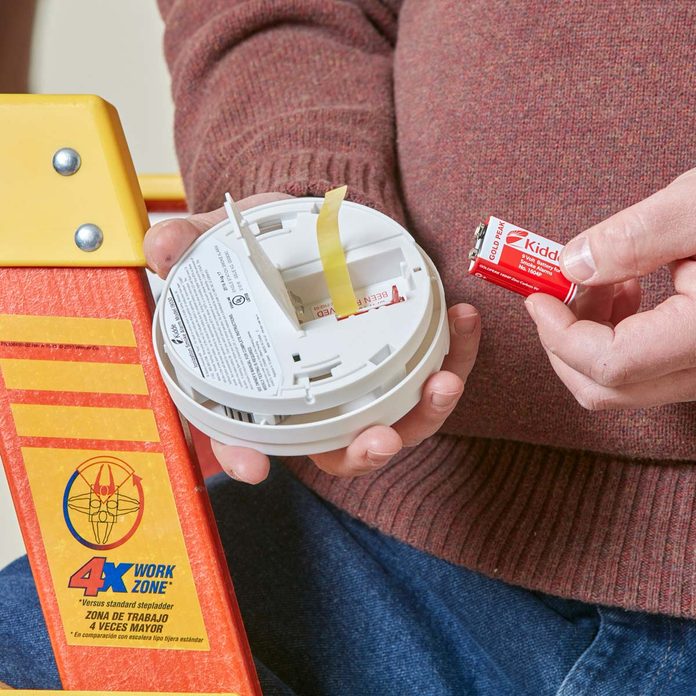No one wants to make costly mistakes when selling a home. Check out these "don'ts" when it comes to putting your home on the market.
Don’t Do These 35 Things If You Want to Sell Your House

Don’t Spend Big Money on Improvements
A good rule of thumb: If it costs you $2,500 to update your bathroom, you should see a market gain of $10,000 to justify the improvement. The philosophy of not spending big money on improvements before selling your home is really geared toward those major improvements that are purely cosmetic.
“I recently had clients who had a home that needed in excess of $20,000 in updates to get in line with the competition in the area that was attracting the higher prices,” said Jared Hoylo, Realtor at Remax. “The homeowners knew if they did the repairs they wouldn’t get an $80,000 increase in value, and they elected to simply list below the competition by $10,000. The home sold within 25 days.”
Given the price of improvements, homeowners must consider the disruption to the household, cost overruns and the general headache of dealing with the remodeling process. If a seller knows an item is on its last legs, get bids from contractors before listing your home. Be prepared for buyers to ask for a repair after the inspection. And check out these most bang-for-the-buck home improvement projects out there.
You can also explore your opportunities to sell your house without a realtor.

Don’t Disregard Curb Appeal
Having a good landscape contractor can help you prepare your home for sale. Mulching, bush trimming, tree branch removal and simple plantings can go a long way in setting your home apart from the competition. These projects are generally affordable and can be done by the DIYer as well.
“I had a client reach out to me late last summer when they knew they were going to be moving the following spring,” said Hoylo. “We had the professional photographer come out and snap a few exterior photos for our listing that was going to be active during January. These home pictures went a long way for the seller to convey what they had for plantings and curb appeal during the dead of winter.”
Here are some ideas on how to improve your curb appeal for selling your home.

Don’t Ask for More Than Your Home is Worth
When residential real estate inventory is low, the market is hot for sellers. But that doesn’t mean buyers will overpay for a home. Too often, sellers treat the real estate process like they are trying to sell something online and leave room to negotiate.
“A home that is priced correctly regarding market history will receive an offer in the normal amount of time,” said Hoylo. “Correct pricing allows the market to dictate how much the home is really worth by creating the possibility of multiple offers.
“The seller who shoots for the moon and asks for more than their home is worth ultimately loses out on ready, willing and able buyers. The home can then become stigmatized as overpriced and buyers may choose to skip the property outright.”

Don’t Leave Clutter in Your Closet
Buyers will open the refrigerator, test the cabinetry, open the pantry closet and look inside the bedroom closets. Remove and store — preferably off-site — all valuables, medications, firearms and memorabilia that may have a monetary or personal value. Here are some DIY ways to organize and clear the clutter before you put your home on the market.

Don’t Forget, Odors Linger
Pets and smoking create obvious odors in your home, but refrigerators, rugs and carpet can also leave unpleasantness in the air.
“I am in the process of preparing to sell a home that was smoked in for years. The odor is everywhere,” said Hoylo. “We tackled the odors first by performing an ozone treatment. The local restoration company came in and set up an ozone machine before the walls were sealed and painted.”
If there were heavy smokers, or pets soiled the carpets, it also may be necessary to replace light fixtures because the insulation inside them can harbor those odors. Duct cleaning and carpet cleaning are additional ways to tackle the problem.
“I’ve had the ducts cleaned in my own home,” said Hoylo. “I about fell over when the contractor showed me the stuff that came out of them. Yikes.”
Here are two DIY tips for cleaning and eliminating odors before you sell your home.

Don’t Forget the Details
When buyers are looking at a home, they scrutinize the details. Do light fixtures work? What about appliances and doors? Are the windows clean? Paying attention to these little details shows the buyer the home has been cared for and loved, increasing the home’s value.
Also, don’t forget to check out these signs of bad house flips.

Don’t Go Overboard with Personal Effects
Your political banners, college diplomas, family portraits and bear rugs should be removed when staging your home for sale. Personal effects can turn off potential buyers if they don’t share your beliefs and preferences.
“I had a client who refused to remove a bear-skin rug from the wall above the fireplace,” Hoylo said. “Within the first week, we received two rounds of feedback about the bear on the wall. After the second feedback, the sellers took the bear mount down — but by then, they may have missed the highest bidder.”

Don’t Add Urinals
Bathroom updates typically bring a return on investment for the home seller. Just avoid putting a urinal in a bathroom update — it actually decreases home values. Instead, opt for any of these 16 cheap bathroom updates with wow factor.

Don’t Add a Sunroom
Definitely do not add a sunroom. This home improvement will actually decrease the value of the home and detract buyers due to maintenance issues. A deck or patio is a much better idea.

Don’t Get Too Trendy
While painting, staging and sprucing up the appeal of your home is important for selling, don’t get too trendy. Avoid using the season’s hottest paint colors or furniture choices. Sticking to traditional colors and furniture styles for staging is the safest bet to improve the resale of your home.
Here are some painting tips to check out before you pick up a brush. According to Zillow, this paint color can help you sell your house for $6,000 more.

Don’t Stick to the ’99’ Strategy
In real estate, the “99” strategy is nearly always employed. For instance, a seller prices their home at $499,000 instead of $500,000 so that buyers might think they’re getting a bargain.
But in most cases, though, knocking off $1,000 to bring the price below a rounded figure doesn’t make that much difference to a buyer or seller, and may keep your home from appearing in some price-based searches.

Don’t Discount Herd Mentality
Given the high stakes of real estate, a buyer doesn’t want to be the only one interested in a house. By pricing your property on the lower end of the value range, you could stimulate interest among more than one buyer and create a herd mentality. Also, if you’re under the gun to sell quickly, this would be a good option.

Don’t Price Your Home So That it Doesn’t Show Up in Real Estate Searches
Most buyers tell their real estate agent they want a three-bedroom home in a certain neighborhood under $500,000 or some other dollar amount. Their agent may set up an automated buyer search in their local database for properties under $500,000. But if a home is listed at $510,000, that buyer will miss it. So if your list price is higher out of the gate, you may miss a segment of buyers.
While this scenario happens frequently, many savvy agents will set up search parameters to include properties listed just above a buyer’s price ceiling. Given how flexible home prices can be, buyers should be aware of properties that could be a good match for them, even if they’re slightly more than what they prefer to pay. Often times the buyer can offer less than list price, or the property will get reduced.

Don’t Get ‘Creative’ with Your Asking Price
Sometimes, sellers want to get creative with their asking price. A seller has a home valued between $750,000 and $800,000 but decides to ask $787,777. Say what?
Such an oddly specific figure calls attention to itself for no good reason, like a house painted purple. Buyers will often wonder why the seller chose that figure. From there, they become curious about who the seller is, and so on.
It’s best to keep the seller far in the background, if not entirely invisible. That’s why Realtors have sellers remove all their personal stuff (photos, diplomas and such) from their homes and decorate in neutral colors.
The goal is to showcase the property, not the seller, and to appeal to as wide an audience as possible. Getting quirky with your asking price counteracts this tried-and-true strategy.

Don’t Forget a Pricing Contingency Plan
Sometimes, sellers overestimate their property’s appeal and want to ask top dollar for it, even if their agent doesn’t believe they’ll get it. Or perhaps another agent planted a high price tag in their mind. Aim high if you must, but set deadlines for lowering the price if necessary, and have parameters in mind for how low you’ll go.

Don’t Forget to Look at the Comparables
According to Zillow, the asking price of a home should be within 10 percent of the average sold price in your neighborhood. Look for home sales in the past three months, especially since appraisers only look at comparable from the last 90 days.

Don’t Forget to Compare Square Footage
Appraisers look at square footage for determining a home’s value. So it’s important to take a look at similar homes that fall within 10 percent of the square footage of your home.

Don’t Be Unprepared for Closing Costs
Your potential buyer may use closing costs as a bargaining chip, so be prepared. If you’re desperate to sell or in a big hurry to move, you might not want to risk losing an interested buyer. In that case, it might be worth it to pay for some or all of the closing costs.

Don’t Forget to Speak Up
It’s important to say something if you don’t agree with the final report of value. A lender might choose not to fund a mortgage if there’s a big difference between the agreed selling price and the appraised value.
Try to find out about the appraiser and their knowledge of your neighborhood before they come out to your home. If you’re not comfortable, ask for another appraiser.
Find out why hiring a home inspector pays off.

Don’t Ignore the Inspection Report
The inspection report can be a critical negotiation tool in buying a home. Whatever issues the inspection report turns up potentially can drive the price down. You might find yourself back at the negotiating table if the inspection report turns up numerous or costly issues with your home.
Learn from a home inspector six signs your home is in trouble.

Don’t Forget to Have Safety Equipment Installed and Working
Make sure your smoke detector, carbon monoxide detector, and other safety devices are working properly. Also, be sure to have an up-to-date fire extinguisher. Also, check out what type of fire extinguisher is best for home use.

Don’t Forget to Inform the Appraiser of Improvements
Have your documents at the ready to show any home improvements you have made including additions, HVAC units, exterior work, roof replacement and other remodeling.

Don’t Hover Over the Appraiser
Appraisers are likely greeted by eager home sellers all the time. Back off and let them work. You can make their work pleasant, but don’t go overboard and trail them through every room. It’s likely to set off alarms.

Don’t Gloss Over the Appraisal
Appraisers aren’t infallible so it’s important to review their work to verify the facts are correct. For example, square footage totals can vary from appraiser to appraiser.

Don’t Take Your Own Photos
Your Instagram account might be lit, but chances are the interior of your house won’t be if you try taking staging photos on your own.
Taking interior photos of dimly lit areas is difficult. Even in well-lit rooms, shadows can wreak havoc. Think about hiring a real estate photographer or check to see what your broker has in mind. A typical real estate photographer charges between $100 to $300. It could make a difference in how your home compares to the competition.

Don’t Be Negative
Yes, selling a home is a tremendous hassle fraught with stress. But remember, you are selling a home. Put your best face forward, hone your salesmanship and learn how to price a home by knowing what appraisers are looking at.

Don’t Force Brands on Buyers
Don’t go around touting appliance brands, for the same reason you don’t leave personal items around the house. Brand loyalty is a real thing. Your loyalty might get questioned by a potential buyer who prefers a different brand.
If you want to get new appliances, see why you should get a front-load washer and dryer versus a top-load combo .

Don’t Be Offended by a Low Offer
It’s all part of the game and you’re supposed to meet in the middle at the end, right? A low offer shouldn’t mean you walk away from the table. No one cares if you’re insulted. This is business, after all!

Don’t Refuse to Make Repairs During Negotiation
In a competitive market, a refusal to make repairs can turn away a buyer in a hurry. On the other hand, it is a negotiation and a seller shouldn’t agree to every repair request from a buyer. Check out these home repairs you can do yourself to save a ton of dough. They’re easier than you think.

Don’t Forget to Be Properly Insured
With increased foot traffic coming through your home, make sure all your insurance coverage is up to date. Someone unfamiliar with your home could trip and fall, your dog could bite somebody and your pool could be a potential hazard. It’s always better to be safe than sorry.

Don’t Sign a Contract with an Unqualified Buyer
Some home buyers will overlook getting pre-approval before house hunting. It’s important to know if an interested buyer has pre-approval from a lender before negotiating a sale.
Find out the things people regret the most after buying a home.

Don’t Forget to Protect Against Low Appraisal
Prevent any potential hiccups of a home sale by doing some legwork ahead of time. Specifically, consider getting an appraisal prior to listing the home. It will protect against the possibility of a low appraisal during the sale of the home.
See what goes into an appraisal so you know what to look for.

Don’t Forget to Turn Up the Light
Just like with taking photos, there should be plenty of light pouring into the house during showings. Open blinds and curtains, and make sure shrubs are trimmed to allow more light into the house. Natural light is an asset for your home and a feature that will make it feel warm, inviting and cozy.
Natural light will make a room feel bigger, too. Check out how to do it.

Don’t Put Off Researching Brokers
Do your research when finding a broker. Talk to neighbors and friends who recently sold for a gauge of who’s good. Take a look at how they list homes and pay attention to the details. Do you want to buy from them when looking at their web site?
See why it’s a good idea to not go to your real estate agent for a home inspector.

Don’t Assume You Have to Sell in Spring
There might be some advantages to selling later in the year. Home inventory typically drops in the fall, and buyers will crave the sight of new listings.


















